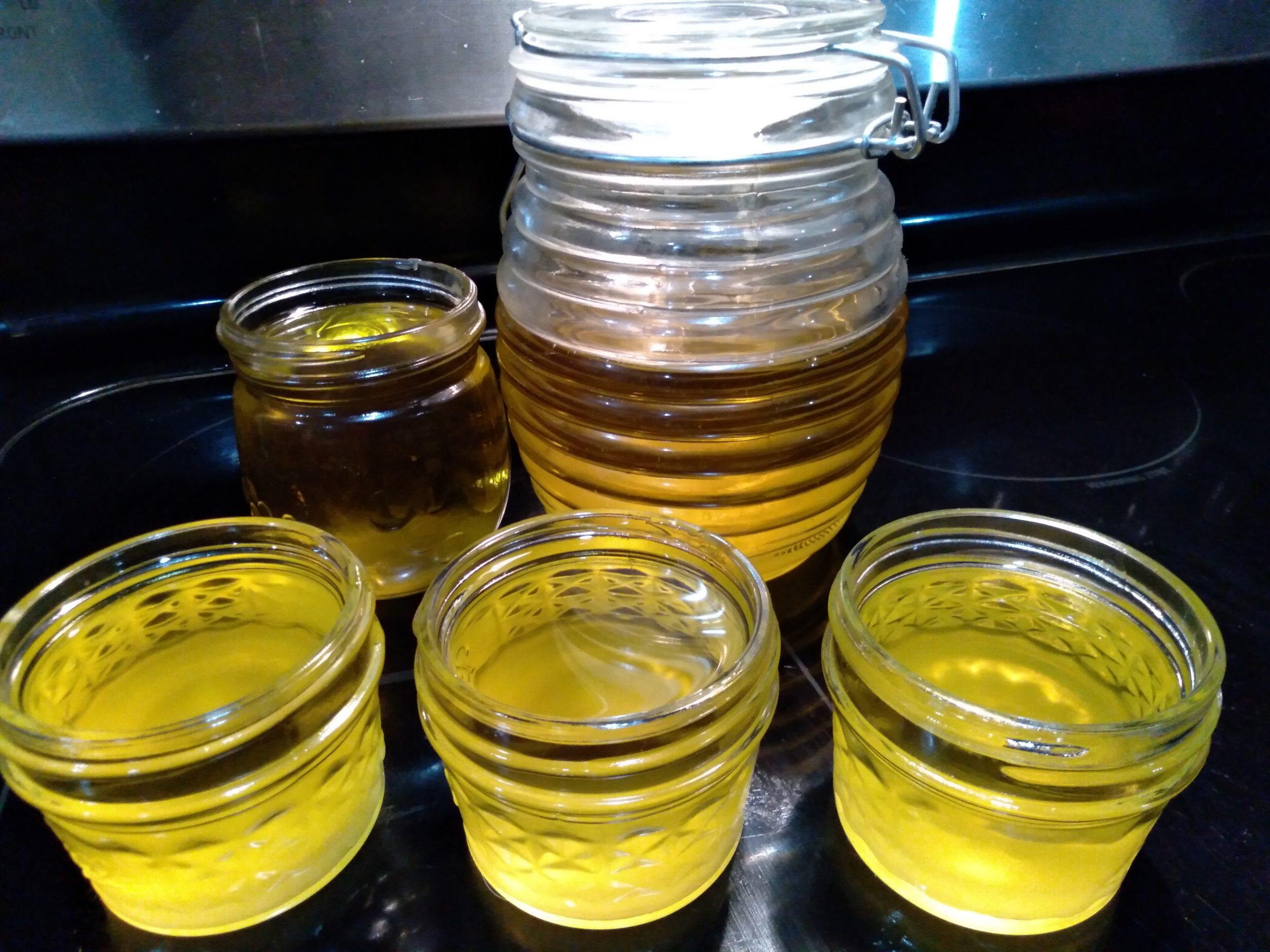
For all your 2000 parts. Edible. Kid Friendly. Pet friendly.
My husband and a couple of my kids suffer from eczema. We use cloth diapers, wash our hands a lot, garden, care for livestock and do winter chores. Our skin needs nourishment. There are a bewildering variety of creams and lotions — some for eczema specifically, others for gardeners’ hands, lip balm, diaper cream etc. I like to keep things simple. This is my good-for-all-skin things lotion. It’s even good for wooden spoons.
Step 1: Infuse your oil with herbs

This recipe can be tailored to your personal taste and also whichever dried herbs you have available.
Infusing dried herbs in oil is easy peasy. It can be done with fresh herbs, but there is a high risk of mold formation and the dried herbs create a more concentrated formula.
Method 1:
Fill a wide mouth mason jar 2/3 full of dried herbs — packed down. Cover with a good quality olive oil or get fancy with almond oil. Leave 1 inch of headspace. Stir thoroughly, a small spatula works well for this, and ensure all the herbs are submerged. Cover with a tight lid and store in a dark place for about a month. [Note: I have left mine in the cupboard for several months with no ill effects. Made the mixture in late summer, stowed it away and prepared the salve in late fall.] A kitchen cupboard works well. Every time you see the jar give a it a few shakes.
Method 2:
Same as method 1 – except instead of putting it in a dark cupboard, place the jar in a warm sunny spot for 2 weeks.
Method 3:
Warm the herbs in oil for an hour on low heat and then pour it all into a jar and allow to steep in a lidded mason jar for a week or so.
Here are some herbs that I recommend infusing for skin cream:
Bee Balm
Bee Balm, also called monarda or wild bergamot, is a gentle calming herb when taken internally. I make tea from to help myself and my children with anxiety. It is also anti-microbial and soothing for cuts and scrapes externally.
Comfrey
Symphytum officinale is the kind of comfrey that spreads by seed and is generally considered a weed. Symphytum x uplandicum, also known as Russian Comfrey, only spreads through root cuttings and is growing happily in my clay soil. If you have either of those already or know someone who does, it’s easy to gather and hang dry the leaves.
Comfrey’s folk name, “bone knit”, is being proven through scientific research. Comfrey salve is excellent for healing sprains, scars, wounds that have healed poorly, and neuralgia. Comfrey root extract can even help relieve arthritis. It helps skin produce new cells quickly and works from the outside in. Comfrey is only recommended for external use due to questions about the toxicity of pyrrolizidine alkaloids which it contains.
Calendula
Also known as Pot Marigold, Calendula is a soothing herb, used for treating eczema, spotty complexion, and greasy skin. Harvest and allow the petals to thoroughly dry before infusing in oil.
Chamomile
Soothes internally and externally. Chamomile tones and strengthens skin, but is so gentle that it can even be used as an eye rinse. Try to use German chamomile as it is more potent than Roman chamomile.
Plantain
Plantago Major. All my kids know how to identify and use the plantain leaves that grow wild over large portions of our property. For any kind of insect bite or sting, any little cut or scrape, chew up a plantain leaf and spit the poultice on the sore spot. How could any child resist? And if you accidentally swallow some or all of the plantain leaf? Great! It’s wonderfully nutritious. We gather the leaves and spread on screens to dry. The seeds can also be made into flour! I can’t wait to try that some day.
Marshmallow
Althaea officinalis. Marshmallow root is the part that I most often see used in herbal recipes, though the entire plant can be dried and used to good effect. Marshmallow is what herbalists call mucilaginous, in other words gooey, think aloe vera gel. It coats and soothes dry inflamed skin OR inflamed throats & digestive tracts when taken internally.
Step 2: Strain the oil
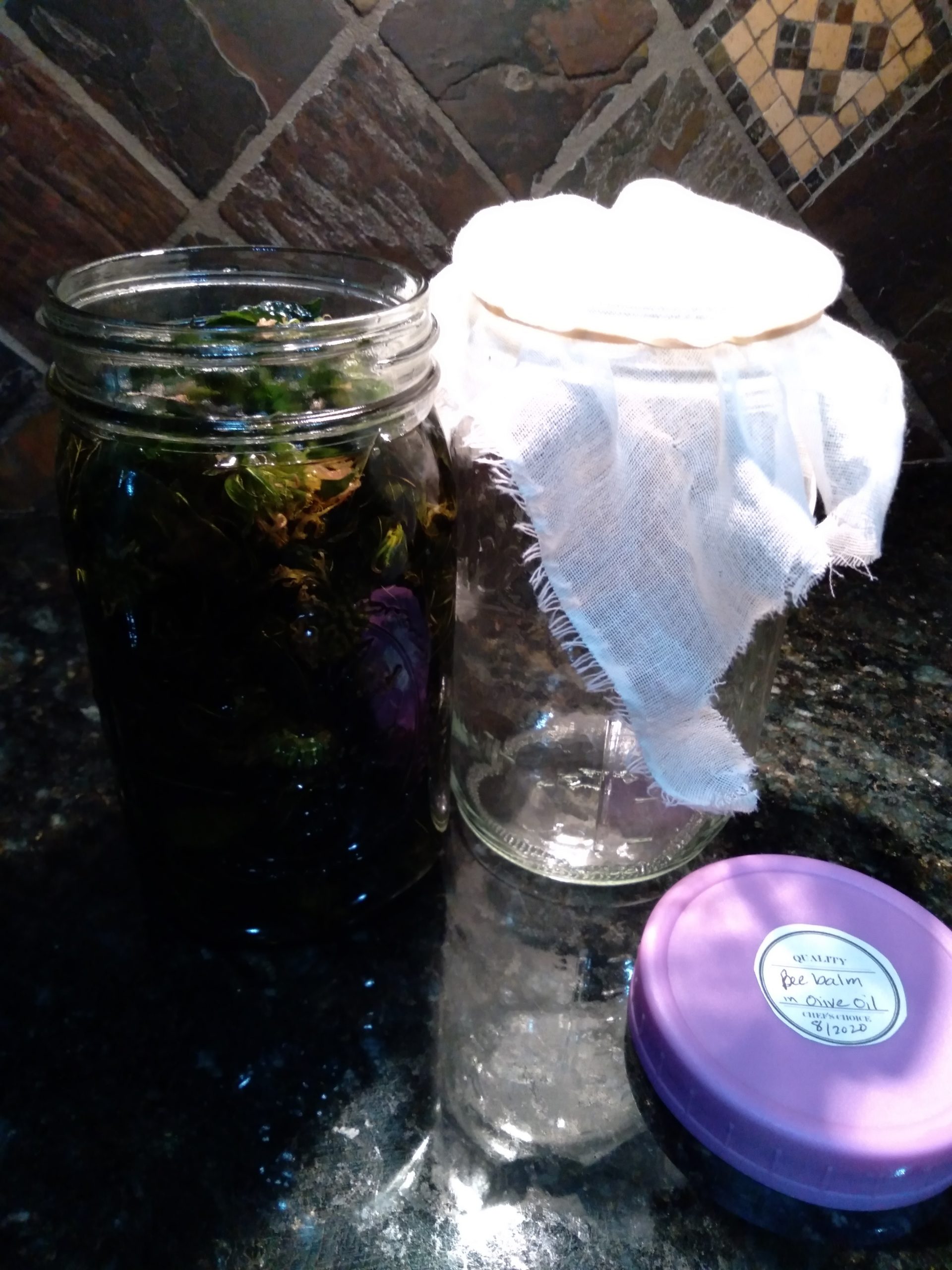
Cover a clean jar with cheesecloth. Allow the cheesecloth to dip into the jar forming a little cup shape and then secure it with a rubber band.
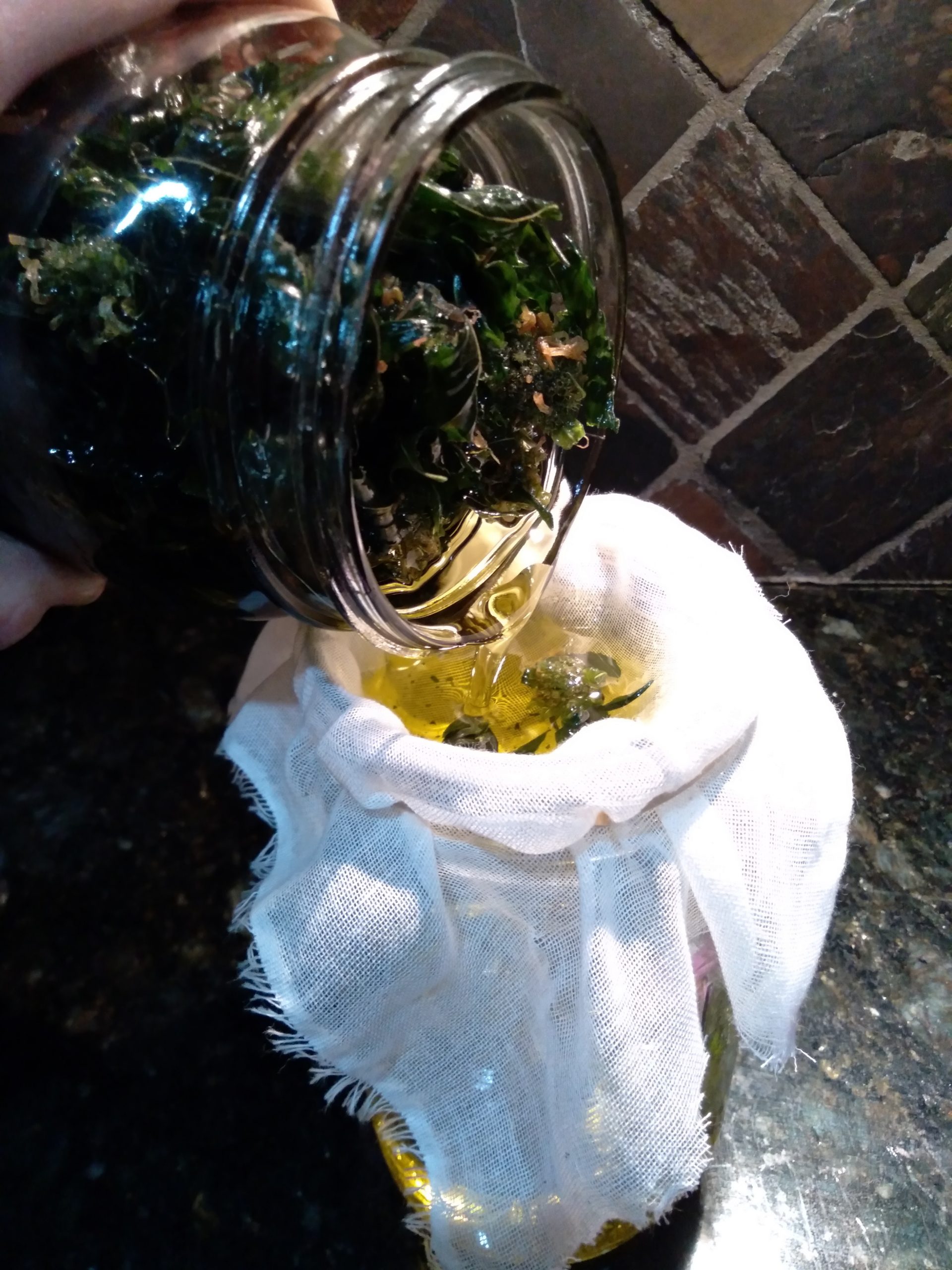
Carefully pour the oil from the infusion through the cheesecloth into the new jar. I usually hold back the dried herbs with a spoon or my fingers.
When trying to get the last bit of oil out of the infusion jar, I remove the cheese cloth from the new jar and lay it on a low rimmed bowl. Then allow the herbs to tumble onto the cloth. Gather up the corners and pull the cheesecloth together like a little sack. Squeeze out the oil while holding it shut. Add that oil to your new jar. Rub the the oil remaining on your hands into your own skin when you are done squeezing. Your skin will appreciate it!
Step 3: Heat the oil, shea butter, beeswax, in a double boiler
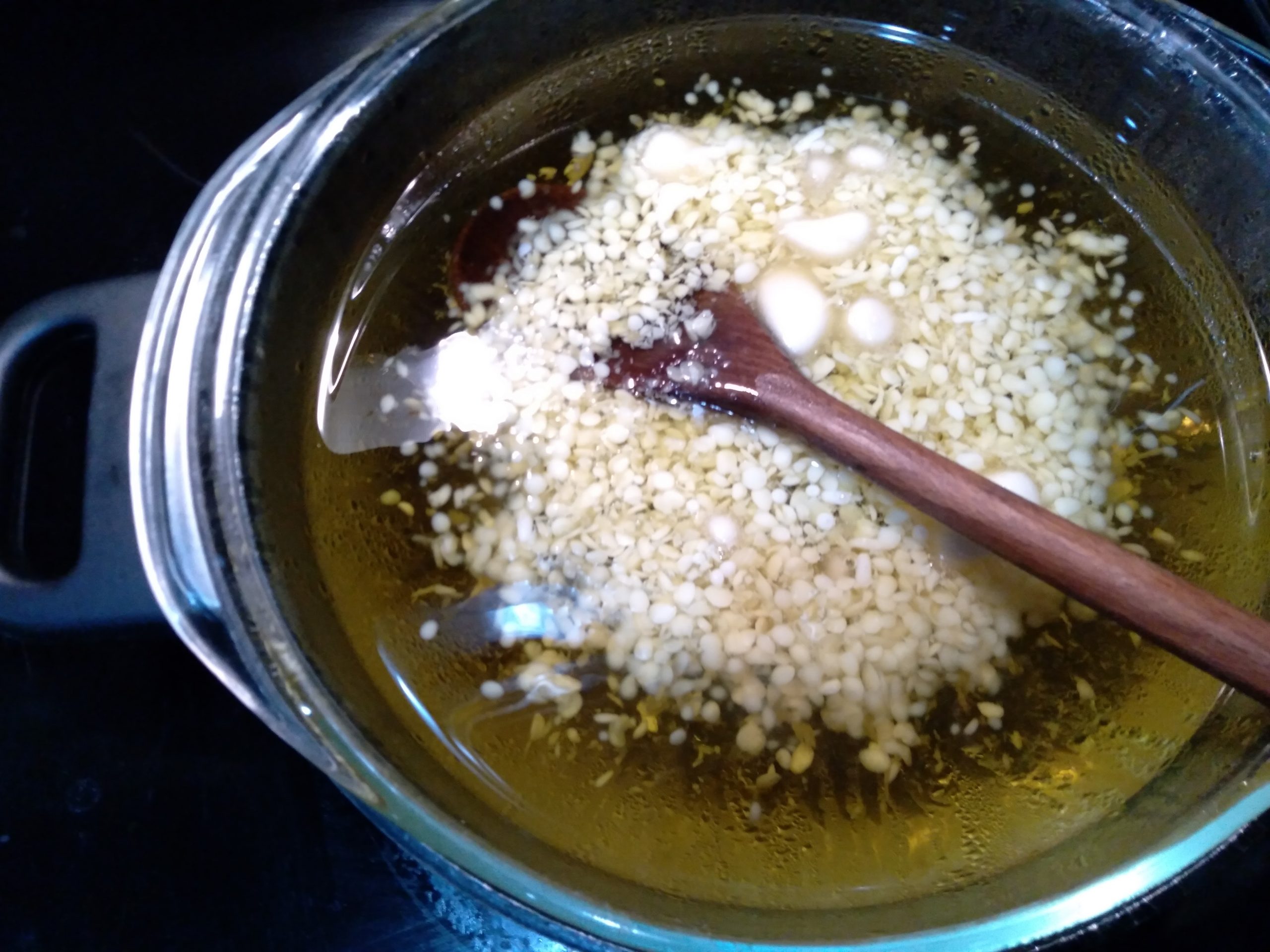
I used 3 cups infused oil, 1 cup shea butter and 1 cup beeswax to make this batch. The recipe for salve is so flexible though, just follow this rule of thumb:
Add one quarter cup of beeswax for every cup of oil. If the consistency seems too liquidy add a little more beeswax. If it’s too stiff, add a little more oil.
Step 4: Test the salve’s consistency
Test the salves consistency as you would a fruit jam. Place a teaspoon worth of the hot salve mixture on a saucer or small plate and refrigerate for 5 minutes. If the cream seems too liquidy add a little more beeswax. If it’s too stiff, add a little more oil.
Step 5: Prepare clean glass jars and carefully pour in the smooth salve

Use clean dry jars that are easy to get your hand in. You’re going to want to use every last bit of this salve. My kids with eczema like to keep the big jar on their dresser. They use a little on the creases of their elbows and behind their knees every night. I keep one small jar near my baby changing station and another in the boys’ room.
This cream usually lasts us 6 months to a year. After a year, if I find any jars left with bits of salve still in them they become “handyman cream”. Since the salve contains edible beeswax and oil, it’s perfect for wooden utensils. I use it to protect and condition my wooden spoon collection and my butcher block pantry countertop. I have used it in the barn and in my daughters’ room on squeaky wooden dresser drawers that were hard to slide out. It works like a charm on anything raw wood in need of conditioning or protection from moisture.
Step 6: Allow the salve to cool and share it with your family & friends
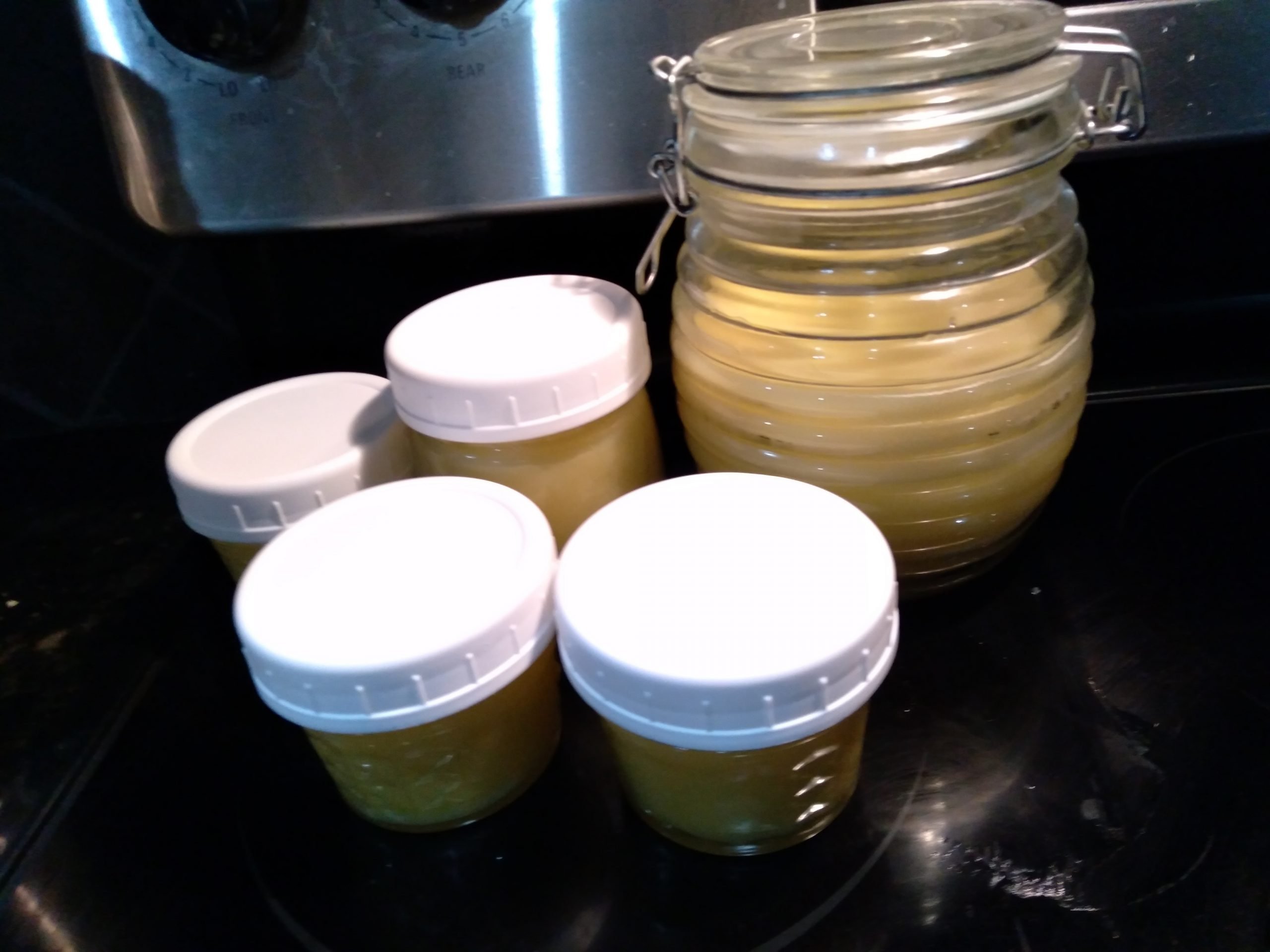
Soothing salve makes a wonderful baby shower gift as a diaper cream. It’s a great stocking stuffer too.




Leave a Reply